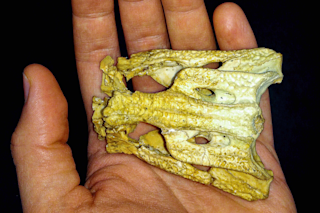Around 13.5 million years ago, an unusually small species of crocodile roamed through Queensland, Australia. And a new paper published in The Anatomical Record and The Journal of Anatomy says that the analysis of the species’ skull reveals novel findings about its size, shape and stomping grounds.
Though there are only two snaggle-toothed species — the saltwater crocodile and the freshwater crocodile — in Australia today, an amazing diversity of ancient crocs once ruled over Queensland. In fact, these species came in a variety of sizes and shapes and settled in a variety of niches outside of the traditional swamps and marshlands.
"If we could travel back in time to North Queensland 13 million years ago, not only would you need to watch out for crocodiles at the water’s edge, but you’d also have to make sure you didn’t step on them in the forest," says Steve Salisbury, a senior ...















